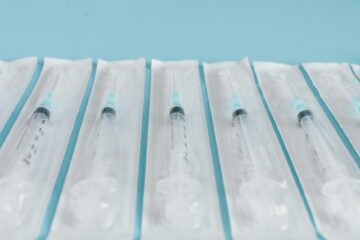When a breeding doesn’t succeed, there are numerous things that might have gone wrong.
Timing is a major one, and often semen quality gets a close second look.
But there’s another critical player in the background—one that’s easy to overlook, but absolutely essential for success:
The uterus.
Even with perfect timing and excellent semen, if the uterus isn’t ready to nurture and support embryos from the very beginning, a pregnancy may never have a chance to take hold.
Today, let’s talk about why uterine health matters more than most breeders realize—and how silent changes in the uterus can quietly shape breeding outcomes.
What a Healthy Uterus Does
The uterus isn’t just a container for puppies—it’s an active, highly responsive organ that plays a critical role from the moment of conception through delivery.
In a healthy female dog:
- The uterine lining (endometrium) builds up under the influence of estrogen and progesterone, creating a thick, glandular surface ready for embryo implantation.
- The muscular wall (myometrium) provides flexibility and strength, allowing expansion during pregnancy and strong contractions at birth.
- The blood supply, delivered by the uterine and ovarian arteries, expands dramatically to support developing fetuses.
- Hormonal changes quiet uterine contractions (via progesterone) and create a locally immunomodulated environment that tolerates the growing embryos.
- Immune adaptations carefully balance defense against infection with tolerance for the semi-foreign fetal tissue.
Embryos enter the uterus around days 8–12 after ovulation and must implant successfully by about day 17. The uterus provides early nutritional support (histotroph), responds to embryonic signals by forming the specialized canine placenta (zonary, endotheliochorial type), and maintains pregnancy through a delicate hormonal and immune balance until parturition.
Without a receptive, healthy uterine environment at exactly the right time, even well-fertilized embryos may fail to implant—or may be lost shortly after.
5 Uterine Issues That Can Impact Breeding Success
While many healthy young females support pregnancies without difficulty, silent uterine changes over time—or even early in life—can lower success rates.
1. Endometrial Hyperplasia
Over repeated heat cycles without pregnancy, the uterine lining can undergo abnormal thickening, glandular enlargement, and cyst formation—a condition known as endometrial hyperplasia. Excessively thickened, disorganized linings are less capable of supporting embryo attachment, and abnormal secretions may create a hostile environment for early embryos.
Although cystic endometrial hyperplasia (CEH) is common in older females, early hyperplastic changes can begin surprisingly young in dogs that experience unbred cycles.
In addition, hyperplastic changes may predispose the uterus to other problems later in life, including infections like pyometra.
2. Subclinical or Chronic Endometritis
Endometritis refers to inflammation of the uterine lining—and it’s far more common than you might realize. Often, there are no external signs: no discharge, no fever, no obvious illness. Nevertheless, chronic low-grade inflammation can quietly impair implantation or cause early embryonic loss. Chronic inflammation can also contribute to subtle fibrosis (scarring) over time, compounding fertility challenges.
In fact, a study of uterine biopsies from subfertile bitches found a high rate (42.6%) of undiagnosed endometritis, emphasizing how often it goes unseen (Schafler, 2008).
3. Mucometra / Hydrometra
Sometimes sterile mucus (mucometra) or watery fluid (hydrometra) accumulates in the uterus. These conditions usually arise secondary to chronic endometrial changes (like hyperplasia). Mild cases may be incidental findings (i.e. not significant), but significant fluid accumulation can impair implantation by physically distending the uterine walls.
Their presence is often a marker of underlying endometrial dysfunction, even if they aren’t the direct cause of infertility themselves.
4. Uterine Fibrosis or Scarring
After repeated hormonal cycles, inflammation, or unnoticed trauma, parts of the uterine lining may become fibrotic – in other words, tough or scarred. Fibrosis reduces elasticity, impairing the uterus’s ability to expand and maintain pregnancies normally. Scarred areas do not support embryo attachment well. While mild fibrosis may go unnoticed, more extensive scarring can contribute to lower litter sizes or missed pregnancies.
5. Congenital Uterine Abnormalities
This is rare, but some dogs are born with structural defects of the uterus, such as missing segments (segmental aplasia) or underdeveloped horns. Even in young, healthy-appearing females, congenital anomalies can cause unexpected breeding failures because these abnormalities may limit the available surface area for implantation.
What Increases the Risk of Uterine Problems?
While aging is a major risk factor, uterine issues are not limited to older dogs.
Several conditions increase the risk, even in young females:
- Multiple unbred heat cycles (allowing hormonal effects to accumulate without the “reset” of pregnancy)
- Previous uterine infections, even mild or unnoticed
- Short breeding intervals without sufficient postpartum recovery
- Breed predispositions (some breeds may be more prone to subtle reproductive issues)
Being aware of these factors can help breeders make more informed decisions about timing, breeding frequency, and when to seek veterinary guidance.
Final Thoughts
Breeding success isn’t just about getting the timing right or finding a quality stud.
Sometimes, the biggest factor is something happening quietly inside the uterus—something no one can see without a deeper look.
A healthy uterus:
- Prepares carefully for implantation
- Nourishes embryos in their earliest, most vulnerable stages
- Protects pregnancies through balanced immune adaptations
- Adapts and expands to carry the next generation into the world
When pregnancy doesn’t happen, it’s not necessarily a sign that you missed something obvious.
Often, it’s biology reminding us just how much hidden work is involved.
If a breeding fails, and especially if it happens more than once, it’s worth talking to your veterinarian about diagnostic options such as ultrasound, culture, or even biopsy in select cases.
These tools help uncover the silent factors—and give you better information to plan your next steps.
References
- Amarante VS et al. Canine Pyometra: A Short Review of Current Advances. Veterinary Sciences, 2023; 10(9):521.
- Fransson BA. Ovaries and Uterus. In: Miller’s Anatomy of the Dog (4th ed). Saunders/Elsevier, 2013.
- Davidson AP & Feldman EC. Clinical Reproductive Endocrinology of Bitches. Theriogenology, 2021; in press.
- Johnston SD, Root Kustritz MV, Olson PN. Canine and Feline Theriogenology. Saunders, 2001.
- Santos RL et al. Association of Pseudoplacentational Endometrial Hyperplasia and Pyometra in Dogs. Journal of Comparative Pathology, 2020; 180:79–85.
- Schlafer, D. H., & Gifford, A. T. (2008). Canine endometrial biopsy: Techniques and interpretation of results. Theriogenology, 70(3), 373–381.



0 Comments